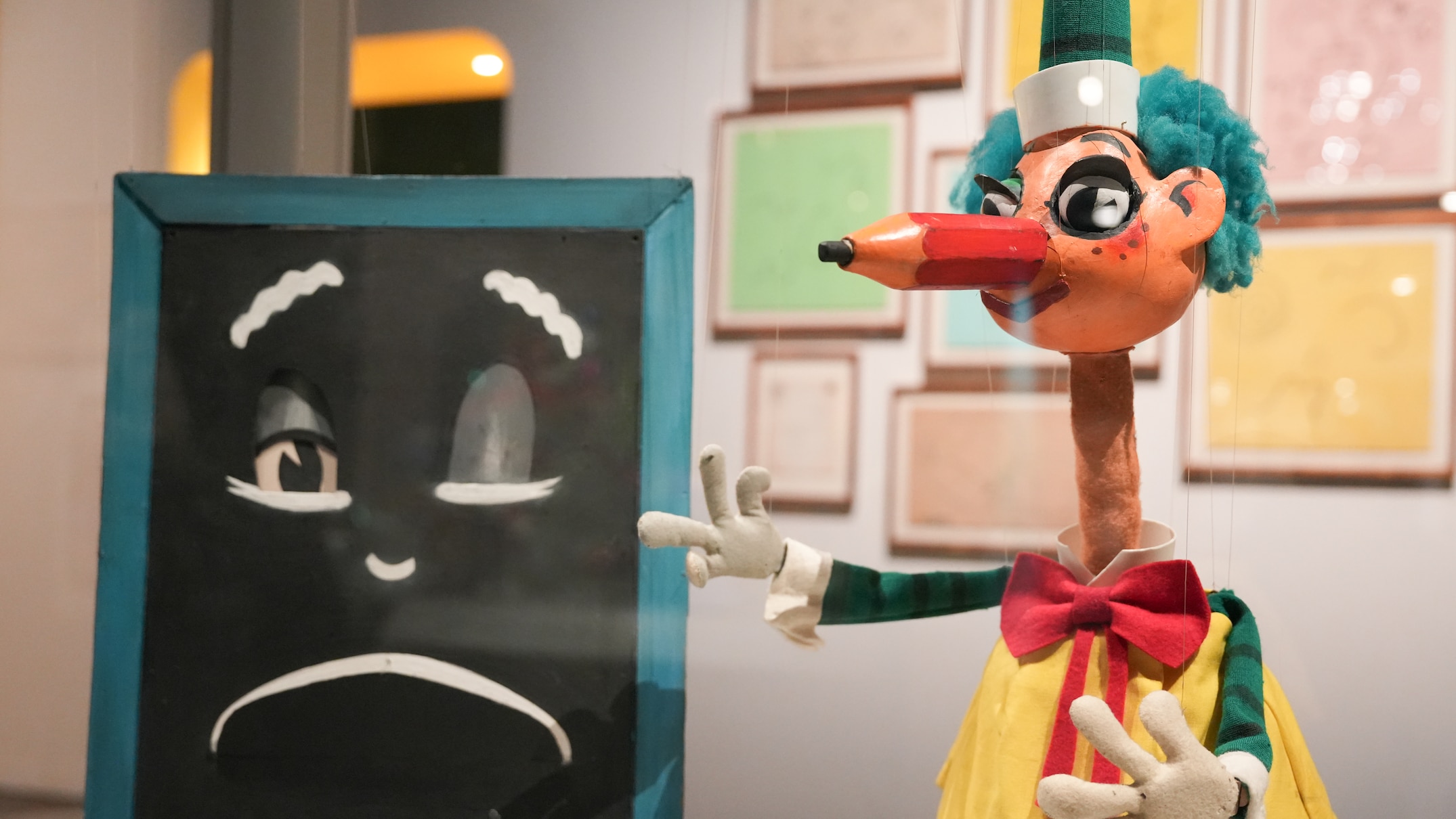Mr. Squiggle’s Beloved Creations Shine at National Museum of Australia

Children's imaginations ran wild when a man from the moon with a pencil for a nose began to squiggle.
Mr Squiggle lit up TV screens for 40 years — and now, decades after the kids' program last aired, the National Museum of Australia in Canberra is displaying hundreds of iconic Mr Squiggle items.
The exhibit includes creator Norman Hetherington's artworks, scripts, and puppets.
Hetherington operated and voiced the blue-haired, floppy, pencil-nosed puppet, with the role a perfect marriage of his skills as a cartoonist and puppeteer.
Nineties kids will remember Mr Squiggle's sidekicks grumpy Blackboard, Bill Steamshovel and Gus the Snail.
There was also Miss Rebecca, the daughter of Norman Hetherington and the show's last host.
"The museum has done such an amazing job of collating it and restoring bits and pieces that needed a little bit of attention," Rebecca Hetherington said.
"I'm so excited that it's here."
'Tools of the trade'
Ms Hetherington says she is thrilled to see younger generations in awe of her late father's work.
She recalls her early experiences with Mr Squiggle in her family home.
"Well, it's funny. When I was a child, the puppets in the studio they were tools of the trade. You didn't muck around with them," she said.
"But, of course, along came the grandchildren and they're allowed to play with all the puppets," she added with a laugh.
She says her youngest son, Tom, looks set to carry on the family's legacy as he has developed a "love of puppetry".
"And my father always said: Mr Squiggle will live on after me," she said.
Children immersed
The ABC's Mr Squiggle and Friends first aired in 1959.
It was one of Australia's longest-running children's shows and prompted many children to first pick up a crayon.
The show involved input from audiences, as children from around the country would send in their doodles and the host would place them on Mr Squiggle's grumpy blackboard to be transformed.
The program received around 10,000 squiggles.
The museum's interactive elements allow children to squiggle on screens, offering a new generation a chance to make characters out of what might first appear to be abstract markings.
Hetherington's world
NMA curator Sophoe Jensen says many people are familiar with Mr Squiggle, but few would know the many other lively characters Hetherington fashioned.
There are camels in hats, turtles playing ukuleles and a shrimp with a tuba.
And extensive behind the scenes work took place to examine and preserve each item.
Museum conservators retouched paint and sourced material where necessary, with plans in place to limit light exposure.
The conservators even made hundreds of cushions to support the puppets while in storage.
'Raw, real, personal'
Ms Jensen says she hopes Hetherington's flare can inspire creativity in museum-goers.
"[Visitors are] going to leave having a bit more of an understanding of the breadth of Norman Hetherington's world," Ms Jensen said.
"I hope the legacy that he leaves is not just about the beautiful, gentle playful nature that he had, but that there is such a joy to having fun and creating."
Ms Jensen notes the digital age offers children more TV programs and characters to choose from than ever before. But she says, unlike Hetherington's work, modern shows are usually two dimensional, with puppetry a rare medium.
"There is something beautifully, hand-crafted, raw, real and personal about Mr Squiggle," Ms Jensen said.
Mr Squiggle and Friends: The Creative World of Norman Hetherington is free at the National Museum of Australian, open until mid-October.
Comments
Post a Comment